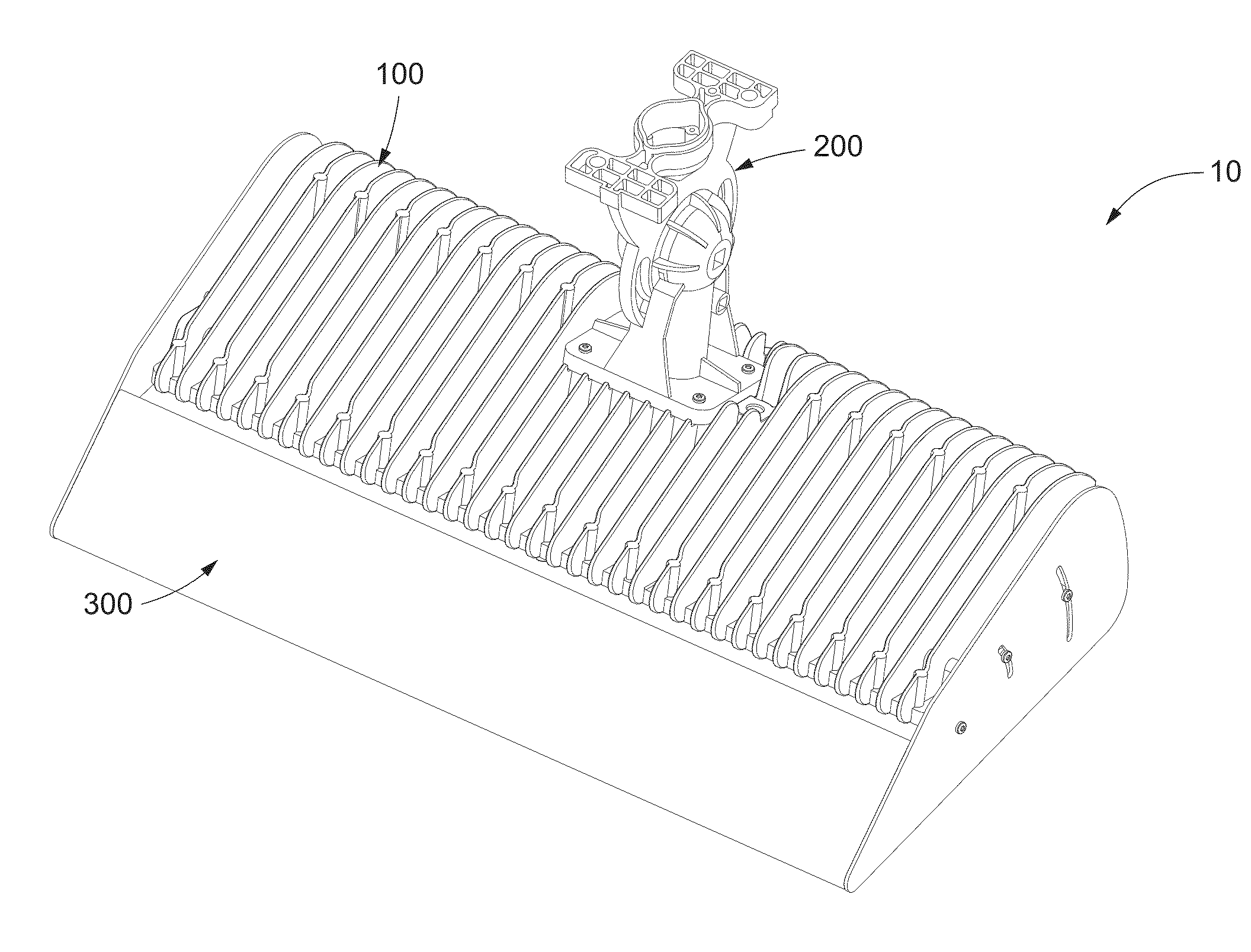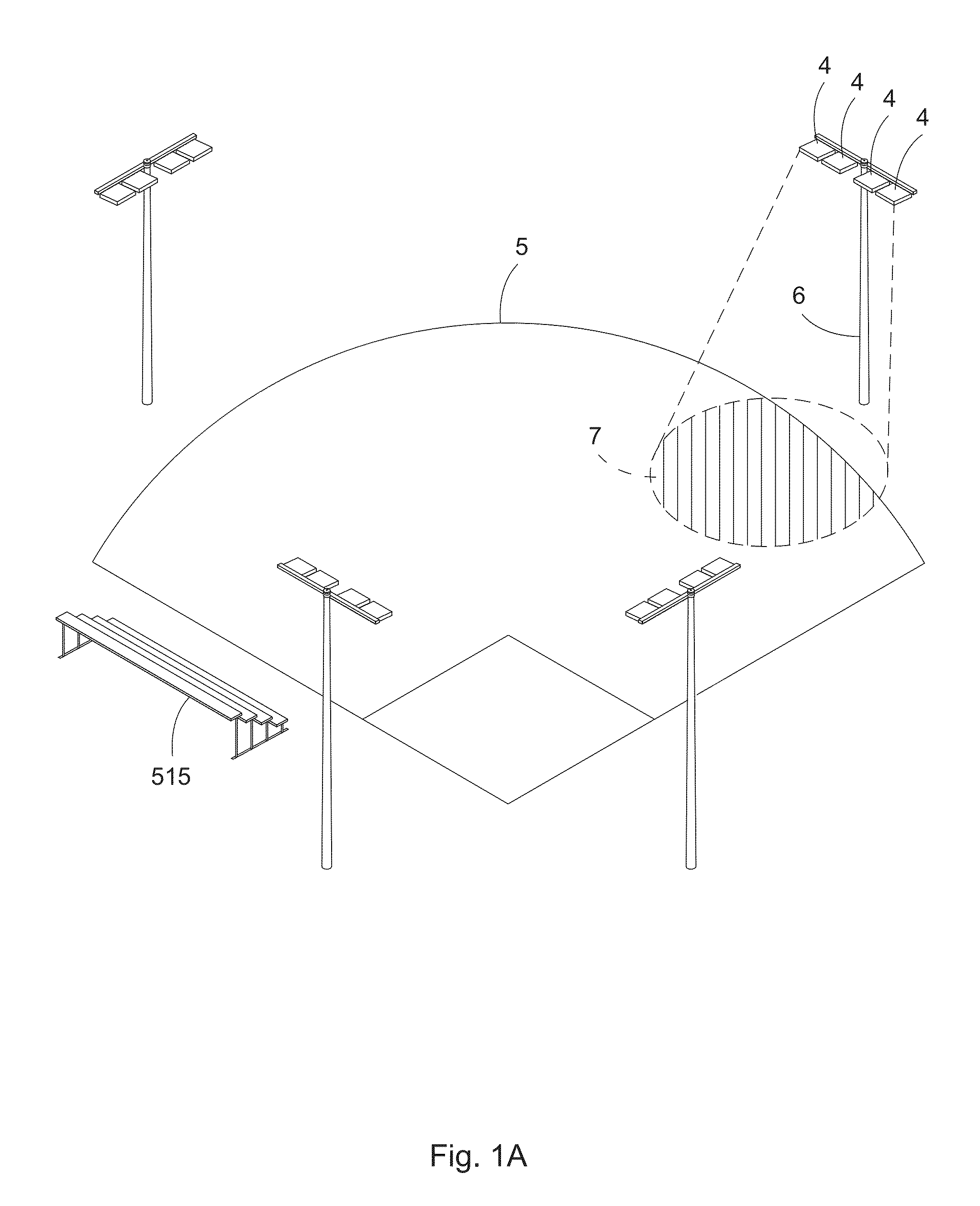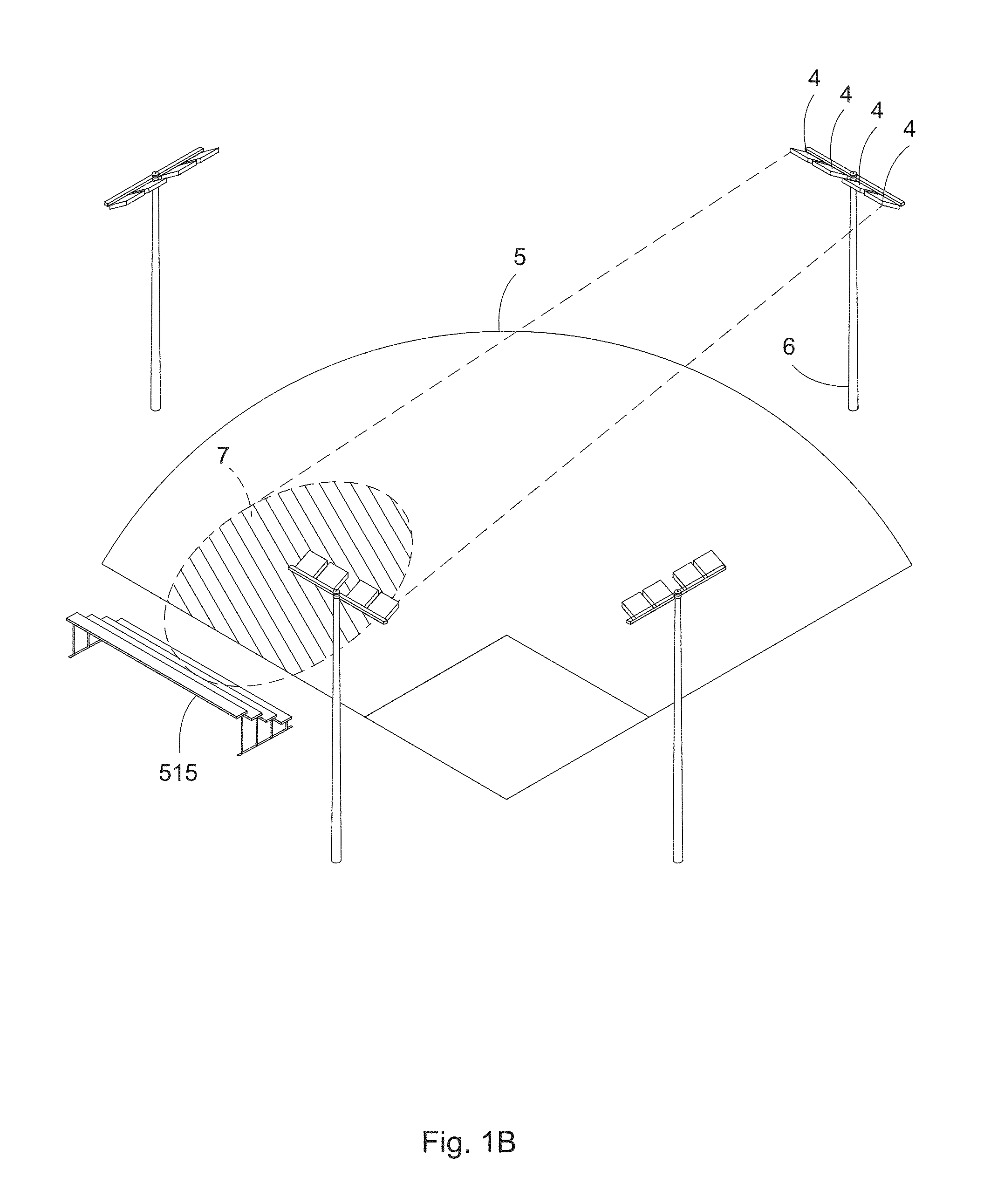Apparatus, method, and system for independent aiming and cutoff steps in illuminating a target area
a target area and cutoff step technology, applied in the field of apparatus, method and system for independent aiming and cutoff steps in illuminating a target area, can solve the problems of reducing the uniformity of lighting, waste of light, and potential nuisance, and reducing the epa. , to achieve the effect of increasing glare control, reducing epa, and increasing lighting uniformity
- Summary
- Abstract
- Description
- Claims
- Application Information
AI Technical Summary
Benefits of technology
Problems solved by technology
Method used
Image
Examples
embodiment 1
[0031]B. Exemplary Method and Apparatus Embodiment 1
[0032]A more specific exemplary embodiment, utilizing aspects of the generalized example described above, will now be described. FIGS. 2A-H illustrate various views of a first envisioned lighting fixture 10 generally comprising a wedge-shaped housing 100 to aid in producing a low EPA with a plurality of exposed fins 101 to aid in fixture cooling, an adjustable armature 200 (also referred to as a knuckle) pivotable about at least one axis to aid in light directing, an external visoring system 300 pivotable at the distal end of housing 100 proximate an external lens 400 to aid in light redirecting, and a plurality of aimable LED modules 500 (see also FIG. 3B) sealed by lens 400 within housing 100 to aid in maximizing light output and flexibility in lighting design. The present embodiment is well suited for situations where pre-aimed or otherwise preset fixtures are desirable for a lighting application (e.g., so to minimize onsite ins...
embodiment 2
[0068]C. Exemplary Method and Apparatus Embodiment 2
[0069]There may be instances where a lighting designer or other person(s) elects a fixture design more suitable for onsite adjustability, albeit at a cost. For example, fixture 12 of aforementioned U.S. application Ser. No. 13 / 471,804 (now U.S. Publication No. 2012 / 0307486)—to which the present application claims priority—is similar in design to fixture 10 of Embodiment 1 herein, but readily permits onsite pivoting of LEDs contained within a housing (see FIGS. 4A-C of Ser. No. 13 / 471,804). While the aiming angle of LEDs 501 is fixed via surface 102 of housing 100 in Embodiment 1 herein, their aiming angles can be adjusted in situ via the aforementioned wedge-shaped inserts; however, this is much less convenient than pivoting enclosure 24 of fixture 12 of Ser. No. 13 / 471,804 (i.e., Embodiment 2 herein). This convenience comes at a cost, though, in that fixture 12 accommodates fewer LEDs than fixture 10 (assuming a comparable size). ...
PUM
| Property | Measurement | Unit |
|---|---|---|
| angles | aaaaa | aaaaa |
| area | aaaaa | aaaaa |
| length | aaaaa | aaaaa |
Abstract
Description
Claims
Application Information
 Login to View More
Login to View More - R&D
- Intellectual Property
- Life Sciences
- Materials
- Tech Scout
- Unparalleled Data Quality
- Higher Quality Content
- 60% Fewer Hallucinations
Browse by: Latest US Patents, China's latest patents, Technical Efficacy Thesaurus, Application Domain, Technology Topic, Popular Technical Reports.
© 2025 PatSnap. All rights reserved.Legal|Privacy policy|Modern Slavery Act Transparency Statement|Sitemap|About US| Contact US: help@patsnap.com



